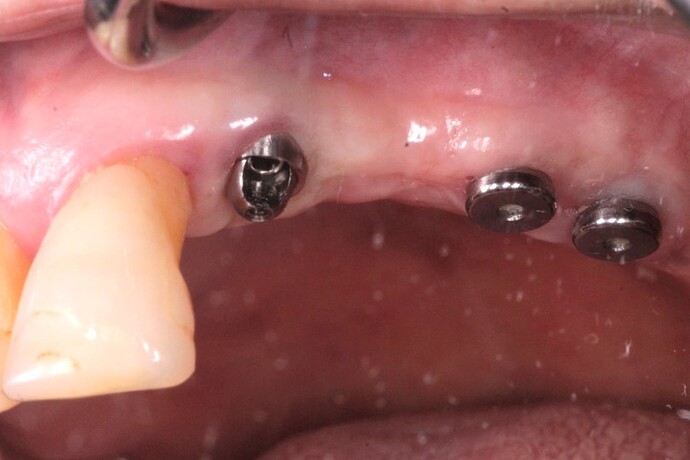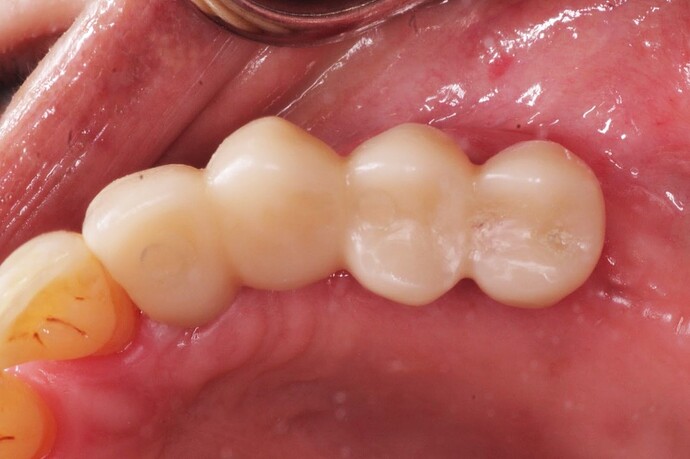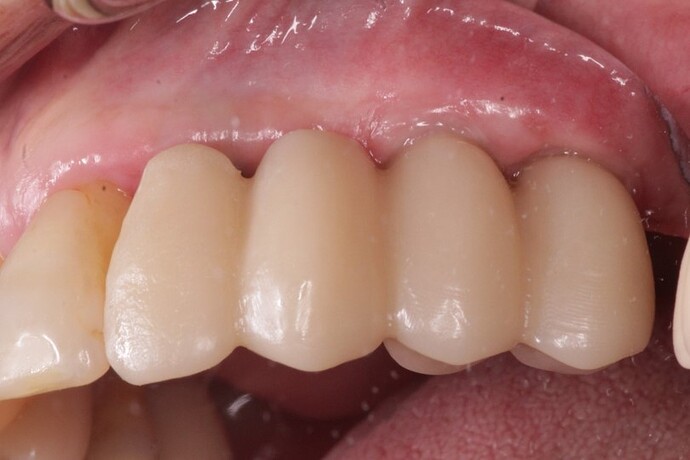A 4-unit implant supported bridge was planned for 10-13 on 3 implants (Picture 1). The facial angulation of # 10 precluded a standard screw-retained option (pictures 2 & 3). Instead of resorting to a cement-retained option, an angled multi-unit abutment was placed on # 10 to reposition the screw access hole towards the palate (Pictures 4 & 5). In this way, a screw-retained bridge was fabricated with a multi-unit ti-base on # 10 and standard non-engaging ti-bases # 12 & 13 (Pictures 6 & 7). How would you have instructed the lab to design the restoration in this type of situation? Curious to hear everyone’s opinion based on previous experience.
Exactly like this!!! Nice work.
Hi. I would have used a regular Ti-Base with a screw that can be accessed from the palatal at up to 30 degrees ( see Swissplus).
I would have tried an angled screw channel. If not then what you did.
I am starting to wonder if we ask too much of a cuspid implant that is splinted/bridge, as the implant goes anterior in protrusive and lateral in working movements. I agree with the angled screw channel as it looks like your central overlaps the exposed MUA. I also wonder if you/the patient has plans to go at least one more tooth/implant posteriorly.
Yes, that would be an alternative to this approach and would work well also. Great suggestion.
Yes, an angled screw channel would also be a great alternative to this approach. This was done ~2 years ago. At the time, I was not aware of how to digitally scan a case like this and have the lab use an angled-screw channel without them having to print an actual model. Since then I have learned that if you buy a specific scan flag for angled screw channel cases it will avoid the extra step of having to print a model.
In this case, the patient did not have enough bone to place an implant in site 14 and did not want a lateral wall approach. But your thought is very interesting and I guess we will learn about it over time.
There is not a specific scan flag for angled screw channel. You can use a standard acan flag and then the lab can choose in the software the library for an angled screw channel tibase or a premill titanium angled screw channel blank.
this is a very cool trick. i’ll have to keep this in mind. i hate cement retained. i always want to do screw retained. using a MUA to redirect the access hole is a cool trick. also helps w/ the draw of the 3 implant / 4 unit bridge.



